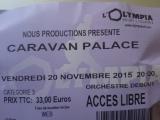vendredi 09 octobre 2020 (2 posts)
Il y a un peu plus de 18 mois, je me suis embarqué dans une nouvelle aventure. Après quelques vols avec un ami en DR400 et en Jodel, je me suis inscris dans un aéro-club à l'aérodrome de Lognes (LFPL) et j'ai débuté une formation de pilote privé. Le PPL est une licence reconnue internationalement qui permet de faire des vols non commerciaux. Elle est associé à une qualification de classe d'avions (comme SEP pour les avions monomoteur à piston) et permet de voler n'importe où dans le monde (ou disons pour l'instant n'importe où où le français est une langue officielle parlée par les contrôleurs aériens) avec des passagers, selon les règles du vol à vue.
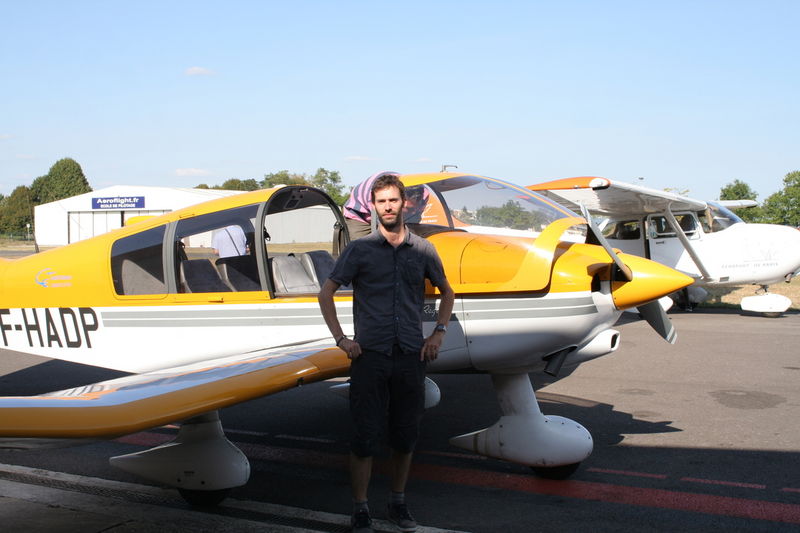
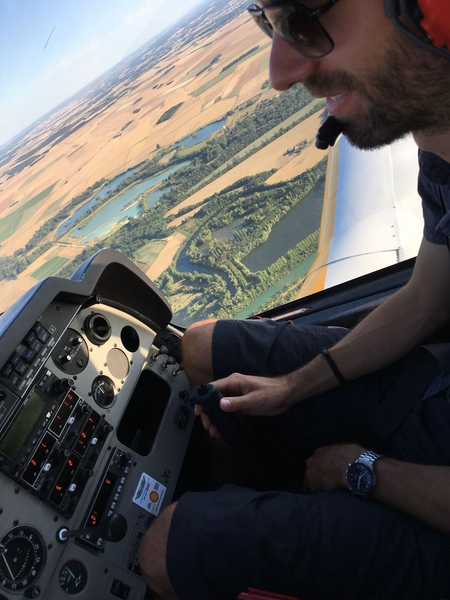
Un peu comme le permis voiture, la formation comporte deux parties, théorique et pratique, avec un examen pour chacune. On peut commencer la formation pratique avant d'avoir la partie théorique (avant même de commencer d'ailleurs), et c'est même recommandé de faire les deux en parallèle, d'autant plus que de nos jours la majeure partie de la formation théorique est faite en ligne (il y a tout de même 10h de cours physiques).
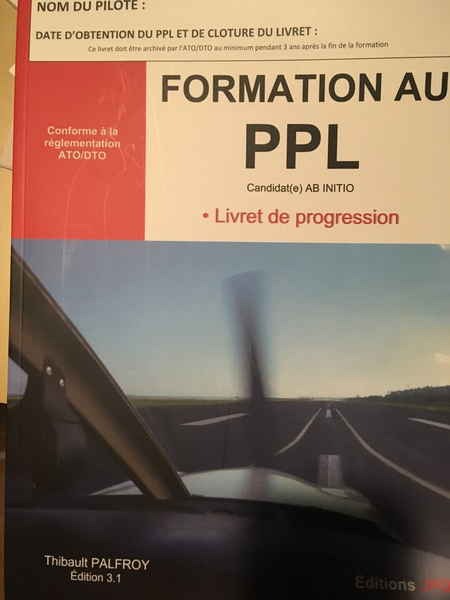
En mars 2019, j'ai donc commencé les deux parties. La partie théorique couvre différents domaines: règlementation, mécanique du vol, météo, facteurs humains etc. et il est évidemment possible d'avancer en parallèle. La partie pratique est plutôt séquentielle et démarre par des exercices de maniabilité (virages, montées, descentes), puis les décollages, l'approche de l'atterrissage, puis l'atterrissage lui-même. Tout ça évidemment avec un instructeur assis à côté (l'élève est en place gauche mais c'est bien l'instructeur qui est commandant de bord, même si au fur et à mesure des leçons il pilote de moins en moins). Une fois les premiers atterrissages effectués on se concentre principalement là dessus en effectuant des tours de pistes: décollage, deux virages à 90°, remontée de la piste, puis nouveau virage en base, puis en finale, et atterrissage. En général on se contente d'un posé-décoller, pour multiplier les atterrissages et s'entraîner le plus possible.
Une fois que l'on sait décoller et atterrir dans les conditions optimales, on commence à s'entraîner (toujours avec instructeur à bord) pour les cas de panne: en particulier les pannes moteurs au décollage, mais aussi problèmes de volets etc., le tout en continuant les tours de piste et les atterrissages. À un moment l'instructeur considère l'élève prêt: il sort de l'avion et l'élève fait son premier vol solo: taxi, essais moteurs, décollage, un tour de piste et atterrissage.
De mon côté, j'ai appris le pilotage sur Aquila AT-01/A210, un petit deux places. Il est très léger (certaines versions sont considérées comme ULM), il pèse à peine 500 kg à vide, et le poids maximum est de 750 kg (avec carburant, passagers et bagages). Il ne va pas très vite (environ 100 nœuds ou 180 km/h), mais il est chouette à piloter. Comme il est très léger, il est très vite secoué par le vent, et dès que ça souffle un peu il est compliqué à poser car il veut continuer de planer (il a une finesse de 14). Au début j'ai réussi à pas mal voler (deux fois par semaine quand tout allait bien), donc la maniabilité s'est faite en environ 6 mois et 23 heures de vol. À ce moment là, mon instructeur est descendu de l'avion et j'ai fait mon premier vol solo. Tout s'est bien passé, sans grand stress, vue la préparation, et je n'ai même pas ressenti d'appréhension au final. Comme tout le monde dit, je pense que je m'en souviendrai toute ma vie, mais en pratique il ne s'est pas passé grand chose, hormis un petit sermon (gentil) du contrôleur sol lors du retour au parking après le vol: j'avais mal compris les instructions qu'il m'avait donné et je ne me suis pas arrêté comme indiqué (mais pas d'incursion de piste, tout va bien).
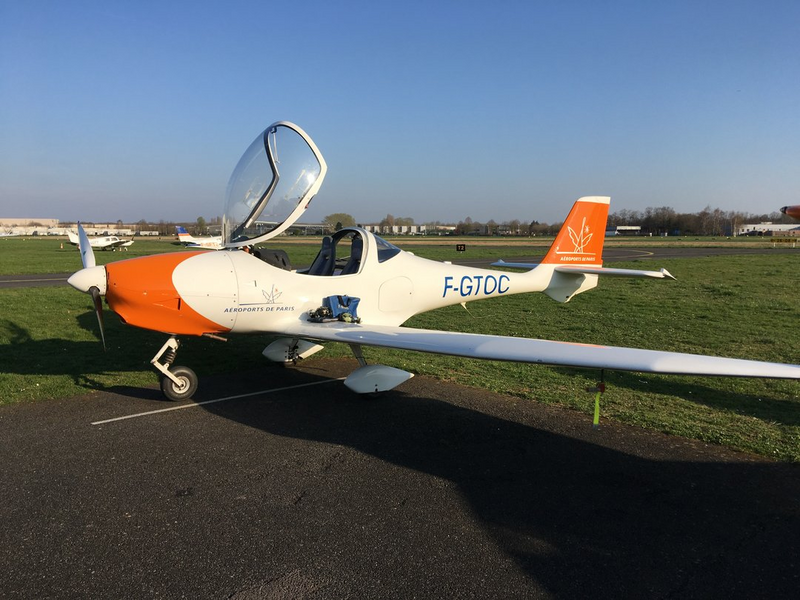
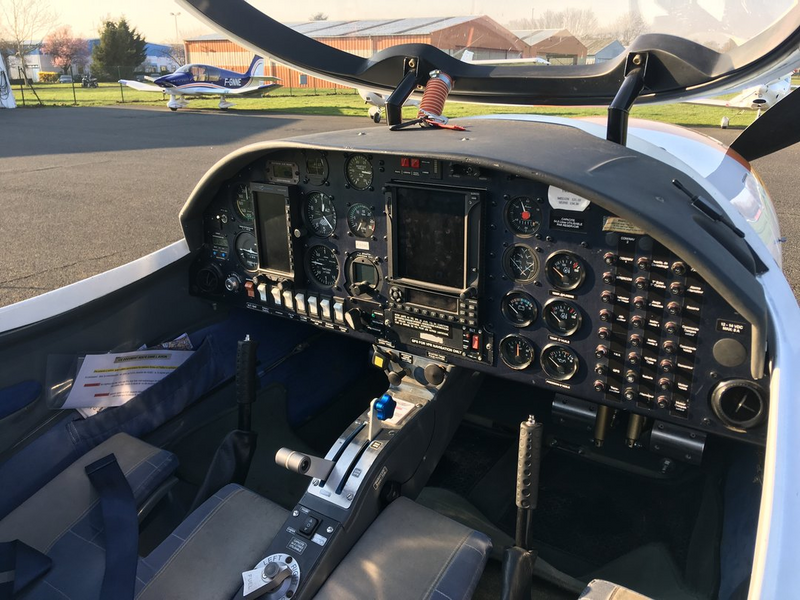
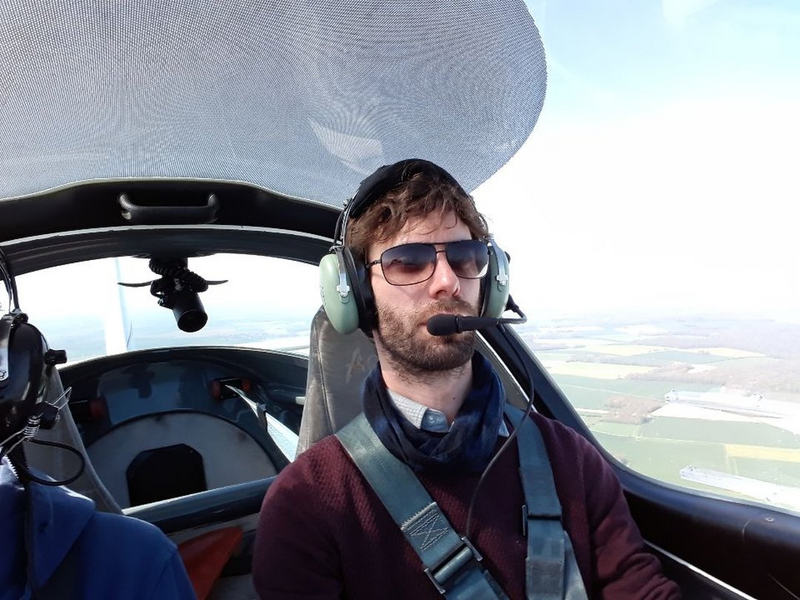
Après le premier solo, on continue les tours de pistes et du solo de temps en temps, et surtout on commence à faire des navigations: au lieu de rester à Lognes (LFPL) ou aux aérodromes alentours (LFPK à Coulommier, LFAI à Nangis), on peut commencer à préparer des vols un peu plus lointain, autour d'une demi-heure par exemple. Dans mon cas j'ai été à Moret-Episy (LFPU), à Troyes-Barberey (LFQB) et à Pontoise (LFPT). Pour préparer une navigation, il faut à la fois prévoir la route elle même (tracer la route sur la carte aérienne, préparer un « log de nav » avec les distances, les temps et les caps à disposition pendant le vol), mais aussi vérifier la météo, les informations règlementaires comme les NOTAM (Notice to Air Men), la quantité de carburant nécessaire etc. Pour moi, au début en tout cas, une préparation de vol me demandait entre une et deux fois le temps de vol effectif. La préparation initiale (navigation etc.) est complétée juste avant le vol par une dernière étude des conditions météo etc. Lors du briefing pré-vol (pendant la formation avec l'instructeur, puis au moment du test avec l'examinateur, et ensuite avec soi-même) on vérifie chaque domaine (navigation, météo, notam, carburant etc.) et à chaque fois on vérifie que tout est OK pour le vol. Dans l'aviation, beaucoup, beaucoup de choses tournent autour de la sécurité (ce qui se comprend, en cas de soucis il ne suffit pas simplement de lever le pied et se mettre sur le bas côté).
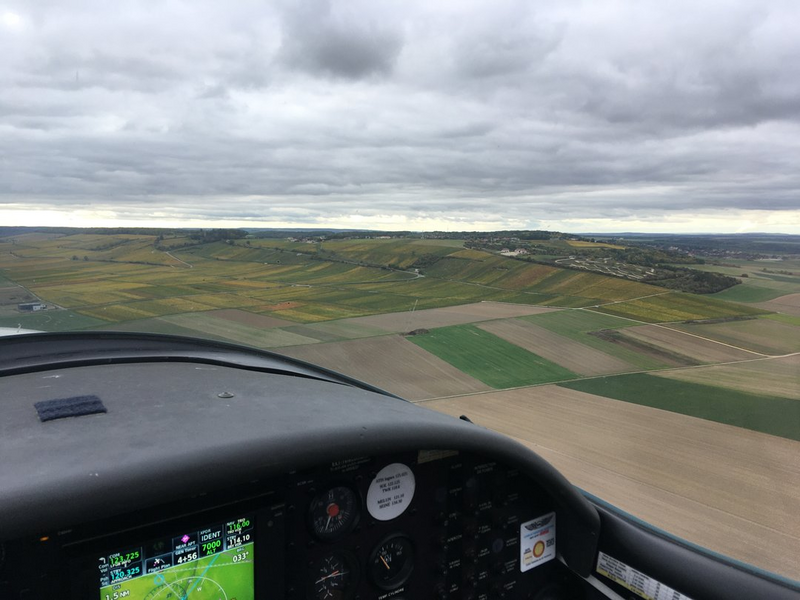
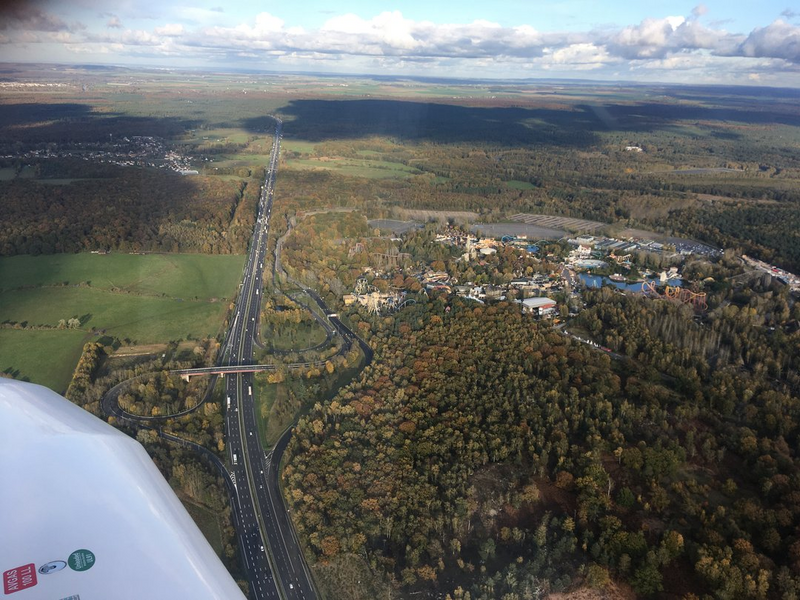
Une fois avoir pratiqué quelques navigations, on retourne vers les pannes, et en particulier quoi faire en cas de panne en campagne: panne moteur au milieu de nulle part, où il faut prévoir un atterrissage d'urgence, ou encore une panne radio. Là encore, une fois prêt (et, dans le cas de mon club, après avoir passé avec succès l'examen théorique), on commence les navigations solo (sur les 10h de vol solo nécessaire pour passer le test, il faut en avoir fait 5 en navigation). Dans mon cas, j'ai fait des navigation vers Troyes, puis Dijon-Darois (LFGI) et j'ai fait ma navigation trois-branches (nécessaire aussi pour passer le test) vers Chalons-Ecury (LFQK) et Pont-sur-Yonne (LFGO).
Juste après ça, quand je commençais à me sentir près pour le test, le confinement lié au COVID-19 a démarré, clouant au sol avions et pilotes pour plusieurs mois. Même après le déconfinement ça a été un peu compliqué de reprendre, et j'étais un peu rouillé et j'ai refais un peu d'entraînement. J'ai finalement passé le test au debut de l'été, mais le premier essai n'a pas été suffisant: j'étais vraiment très stressé, et honnêtement sans doute pas complètement prêt. Du coup j'ai fait un peu de réentraînement pendant l'été, et finalement, courant septembre, j'ai passé le test final, qui cette fois a été réussi.
Après un peu de paperasse (rendue un peu compliquée mais pas dramatiquement non plus par l'épidémie qui reprend un peu), ma licence de pilote privé est finalement arrivée au courier.
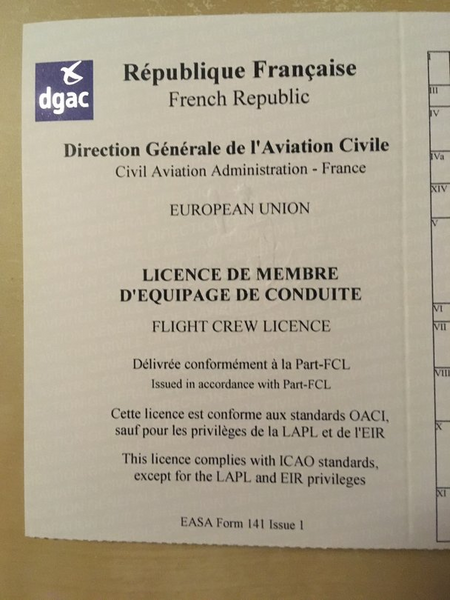
Et maintenant que je peux voler à peu près quand et comme je veux, l'automne est finalement là, avec un temps au mieux maussade. Du coup planifier des vols devient un peu compliqué. Pour l'instant, et même si techniquement je peux prendre des passagers avec moi, je refais quelques vols solos sur des terrains familiers. Avant de plus tard pouvoir emmener un passager avec moi en Aquila, et peut-être me faire lâcher sur un quatre places comme le DR400.
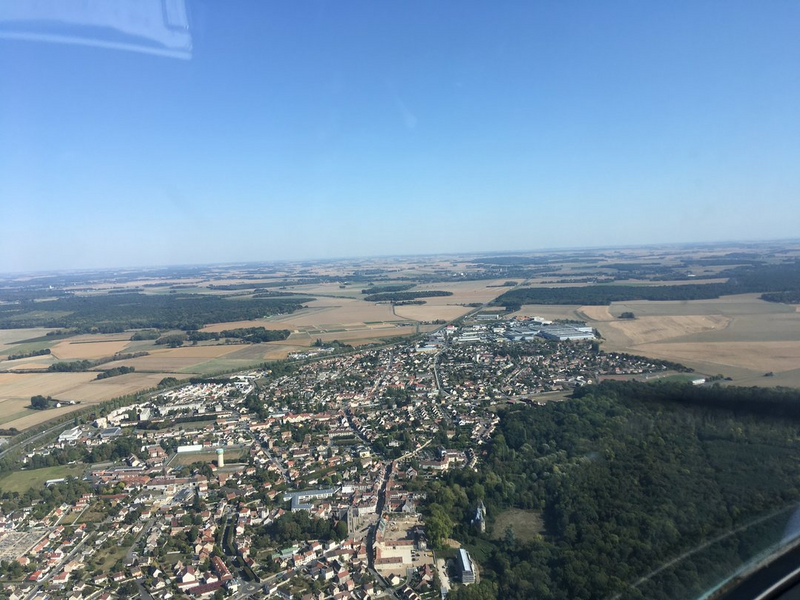
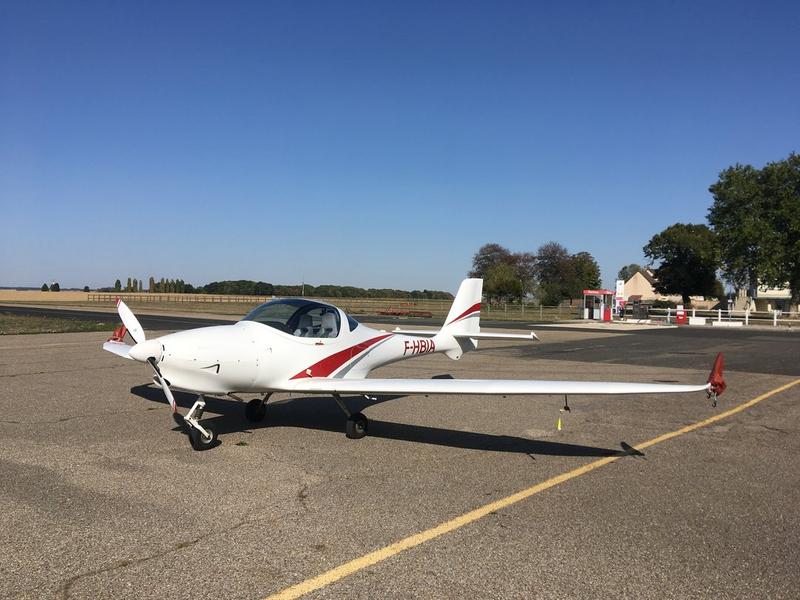
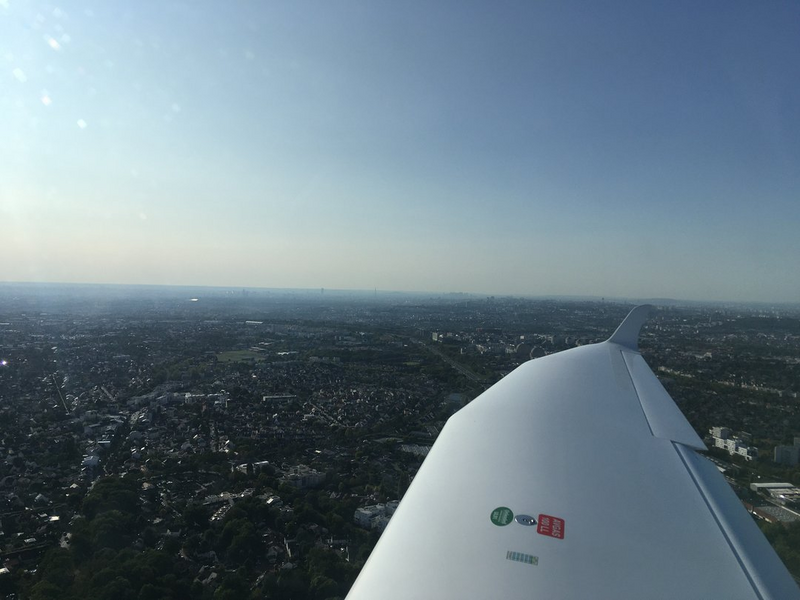
Corsac@18:31:29 (Echoes)
So, a bit more thank 18 months ago, I started a new adventure.
After a few flights with a friend of mine in a Robin DR400 and
Jodel aircrafts, I enlisted in a local flight club at the Lognes
airfield (LFPL), and started a Pilot Private License training. A
PPL is an international flight license for non commercial
operations. Associated with a qualification like the SEP (Single
Engine Piston), it enables you to fly basically anywhere in the
world (or at least anywhere where French is spoken by the air
traffic controllers) with passengers, under Visual Flight Rules
(VFR).


A bit like with cars, training has two parts, theoretical and
practical, both validated in a test. You don't have to pass the
theoretical test before starting the practical training, and it's
actually recommended to do both in parallel, especially since
nowadays most of the theoretical training is done online (you still
have to do 10h of in-person courses before taking the test).

So in March 2019 I started both trainings. Theoretical training is
divided in various domains, like regulations, flight mechanics,
meteorology, human factors etc. and you can obviously train in
parallel. Practical is more sequential and starts with basic flight
training (turns, climbs, descents), then take-off, then landing
configuration, then landing itself. All of that obviously with a
flight instructor sitting next to you (you're on the left seat but
the FI is the “pilot in command”). You then start doing circuit
patterns, meaning you take off, do a circuit around the airfield,
then land on the runway you just took off. Usually you actually
don't do a complete landing but rather touch and go, and do it
again in order to have more and more landing training.
Once you know how to take-off, do a pattern and land when
everything is OK, you start practicing (still with your flight
instructor aboard) various failures: especially engine failures at
take off, but also flaps failure and stuff like that, all that
while still doing patterns and practicing landings. At one point,
the flight instructor deems you ready: he exits the plane, and you
start your first solo flight: engine tests, take off, one pattern,
landing.
For me practical training was done in an Aquila AT-01/A210, which
is a small 2-seater. It's really light (it can actually be used as
an ultralight), empty weight is a bit above 500kg and max weight is
750. It doesn't go really fast (it cruises at around 100 knots, 185
km/h) but it's nice to fly. As it's really lightweight the wind
really shakes it though and it can be a bit hard to land because it
really glides very well (with a lift-to-drag ratio at 14). I tried
to fly a lot in the beginning, so the basic flight training was
done in about 6 months and 23 flight hours. At that point my
instructor stepped out of the plane and I did my first solo flight.
Everything actually went just fine, because we did repeat a lot
before that, so it wasn't even that scary. I guess I will remember
my whole life, as people said, but it was pretty uneventful,
although the controller did scold me a little because when taxiing
back to the parking I misunderstood the instructions and didn't
stop where asked (no runway incursion though).



After the first solo flight, you keep practicing patterns and solo
flights every once in a while, and start doing cross-country
flights: you're not restricted to the local airfields (LFPL, LFAI,
LFPK) but start planning trips to more remote airports, about 30-40
minutes away (for me it was Moret/LFPU, Troyes/LFQB,
Pontoise/LFPT). Cross country flights requires you to plan the
route (draw it on the map, and write a navigation log so you know
what to do when in flight), but also check the weather, relevant
information, especially NOTAMs - Notice To Air Men (I hope someone
rename those Notice to Air Crews at one point), estimate the fuel
needed etc. For me, flight preparation time was between once and
twice the flight time. Early flight preparation is completed on the
day by last-minute checks, especially for weather. During the
briefing (with the flight instructor at first, but for the test
with the flight examiner and later with yourself) you check in turn
every bit of information to decide if you're GO or not for the
flight. As a lot of things in aviation, safety is really paramount
here.


Once you've practiced cross country flight a bit, you start
learning what to do in case of failures during a non-local flights,
for example an engine failure in a middle of nowhere, when you have
to chose a proper field to land, or a radio failure. And again when
you're ready for it (and in case of my local club, once you pass
your theoretical exam) you go for cross-country solo flights (of
the 10h of solo flight required for taking the test, 5h should be
done in cross-country flights). I went again to Troyes (LFQB), then
Dijon-Darois (LFGI) and did a three-legs flight to Chalons-Ecury
(LFQK) and Pont sur Yonne (LFGO).
And just after that, when I was starting to feel ready for the
test, COVID-19 lockdown happened, grounding everyone for a few
months. Even after it was over, I felt a bit rusty and had to take
some more training. I finally took the test in the beginning of
summer, but the first attempt wasn't good enough: I was really
stressed, and maybe not completely ready actually. So a bit more
training during summer, and finally in September I took the final
test part, which was successful this time.
After some paperwork, a new, shiny, Pilot Private License arrived
at my door.

And now that I can fly basically when I want, the autumn is finally
here with bad weather all day long, so actually planning real
flights is a bit tricky. For now I'm still flying solo on familiar
trips, but at some point I should be able to bring a passenger with
me (on the Aquila) and at some point migrate to a four-seaters like
the DR400, ubiquitous in France.



Yves-Alexis@18:37:21 (Debian)
vendredi 16 octobre 2020 (1 post)
It's a bit of a long shot, but maybe someone on Planet Debian or
elsewhere can help us reach the right people at Apple.
Starting with iOS 14, something apparently changed on the way
USB tethering (also called Personal Hotspot) is set up, which broke
it for people using Linux. The driver in use is ipheth, developped
in 2009 and
included in the Linux kernel in
2010.
The kernel driver negotiates over USB with the iOS device in
order to setup the link. The protocol used by both parties to
communicate don't really seemed documented publicly, and it seems
the protocol has evolved over time and iOS versions, and the Linux
driver hasn't been kept up to date. On macOS and Windows the driver
apparently comes with iTunes, and Apple engineers obviously know
how to communicate with iOS devices, so iOS 14 is supported just
fine.
There's an open
bug on libimobildevice (the set of userlands tools used to
communicate with iOS devices, although the update should be done in
the
kernel), with some debugging and communication logs between
Windows and an iOS device, but so far no real progress has been
done. The link is enabled, the host gets an IP from the device, can
ping the device IP and can even resolve name using the device DNS
resolver, but IP forwarding seems disabled, no packet goes farther
than the device itself.
That means a lot of people upgrading to iOS 14 will suddenly
lose USB tethering. While Wi-Fi and Bluetooth connection sharing
still works, it's still suboptimal, so it'd be nice to fix the
kernel driver and support the latest protocol used in iOS 14.
If someone knows the right contact (or the right way to contact
them) at Apple so we can have access to some kind of documentation
on the protocol and the state machine to use, please reach us
(either to the libimobile device bug or to my email address
below).
Thanks!
Yves-Alexis@14:36:41 (Debian)










